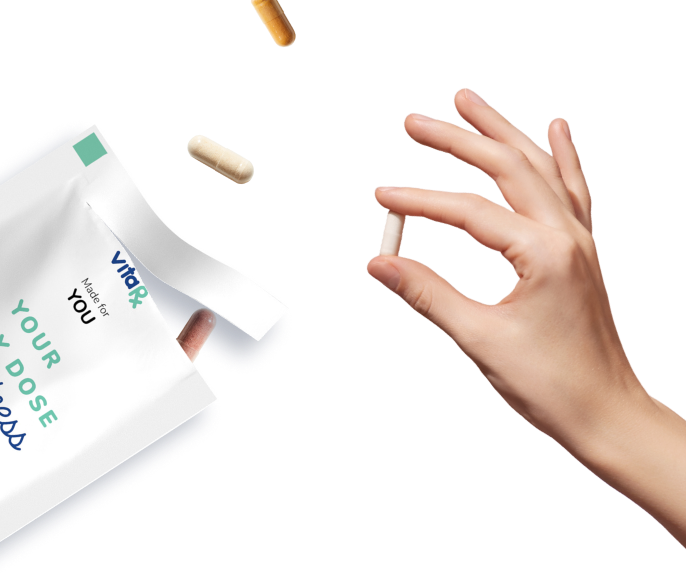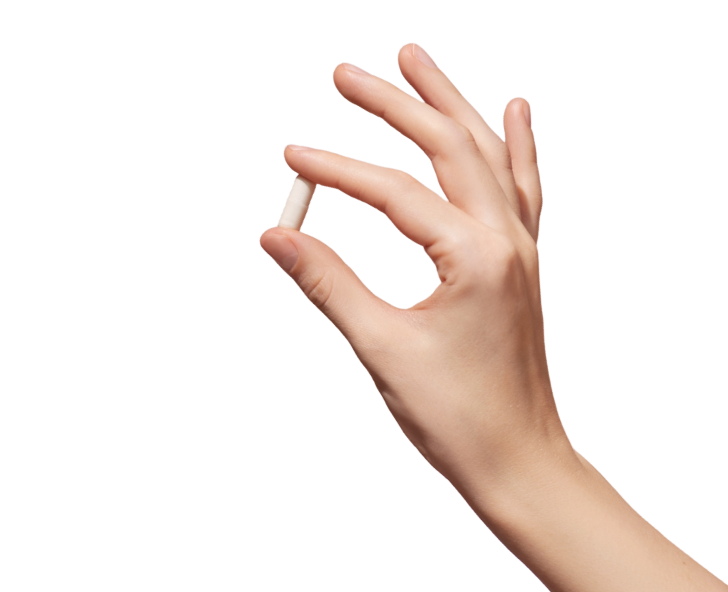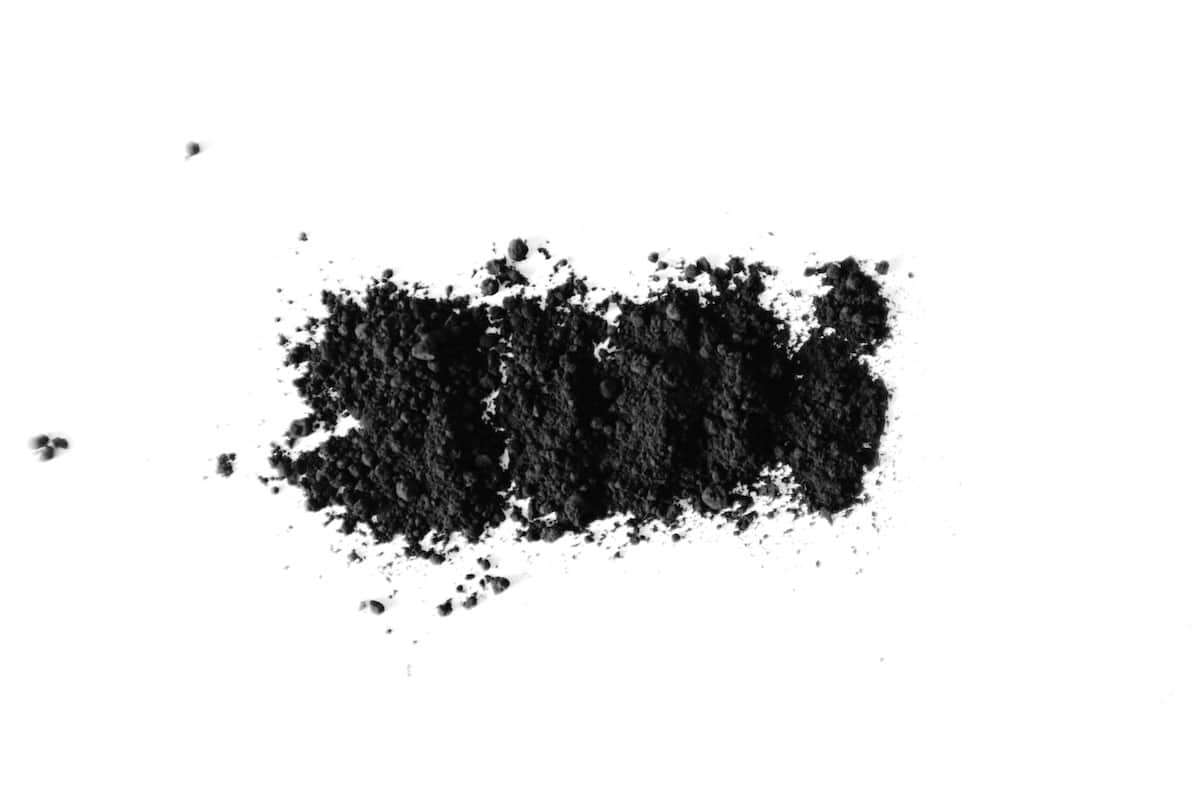Last update: November 4, 2025
6 minute read
Does Epsom Salt Expire? What You Need to Know About Storage and Shelf Life
Found an old bag of Epsom salt in your cabinet? Learn whether it goes bad, how to tell if it's still good, and the best ways to keep it fresh.

By Derick Rodriguez, Associate Editor
Edited by Yerain Abreu, M.S.
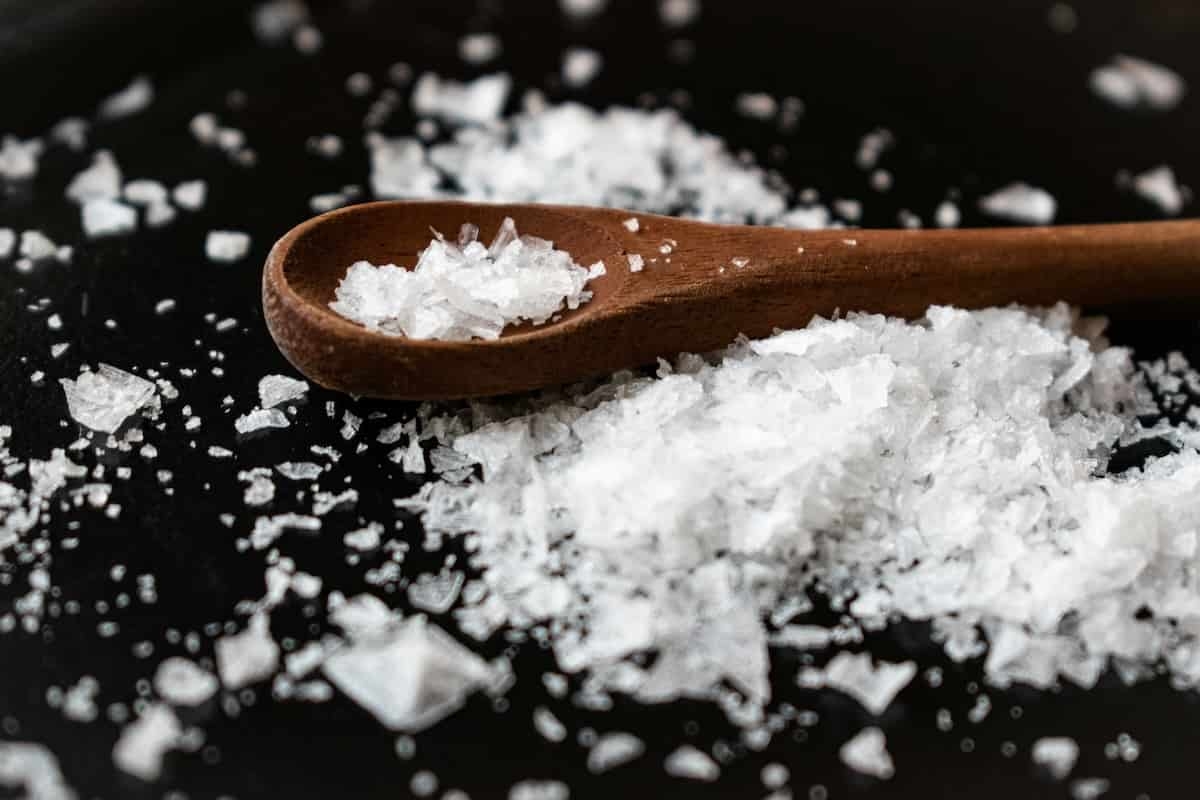
You're about to draw a relaxing bath and reach for that bag of Epsom salt you bought... wait, when did you buy this? The package is dusty, maybe a little damp, and you're not sure how long it's been sitting there. Can you still use it?
Epsom salt has become super popular for muscle recovery, stress relief, and even gardening. But unlike your vitamins or supplements, there's not always a clear expiration date on the bag. So does it actually go bad?
Here's the deal: Epsom salt doesn't really expire, but there are some good reasons you might not want to use that ancient bag.
Key takeaways
- Epsom salt doesn't expire like food because it's a stable mineral
- Water and moisture are the main problems that can ruin it
- Stored correctly, Epsom salt lasts forever
What is Epsom salt?
Epsom salt isn't actually salt at all. It's a mineral called magnesium sulfate.
Scientists discovered it in Epsom, England way back in the 1600s. When you add it to warm bath water, it breaks down into magnesium and sulfate that your skin absorbs.
People use Epsom salt baths for:
- Relaxing sore muscles after workouts
- Reducing stress and sleeping better
- Easing minor aches
- Making skin softer
Magnesium helps with over 300 different processes in your body, including how your muscles and nerves work. That's why so many people love their post-gym Epsom salt soaks.
VitaRx Tip
Not getting enough magnesium from food? A quality magnesium supplement works great alongside Epsom salt baths. They help your body in different ways.
Why Epsom salt doesn't expire
Most expiration dates exist because stuff breaks down over time. Oils go bad. Vitamins lose their strength. Probiotics die.
Epsom salt is different. It's just a mineral. There's nothing alive in it to die. No oils to go rancid. Under normal conditions, magnesium sulfate just stays magnesium sulfate.
Sometimes you'll see "best by" dates on the package. These aren't because the salt goes bad. Companies print them as quality guidelines, not safety warnings. Think of them more like suggestions.
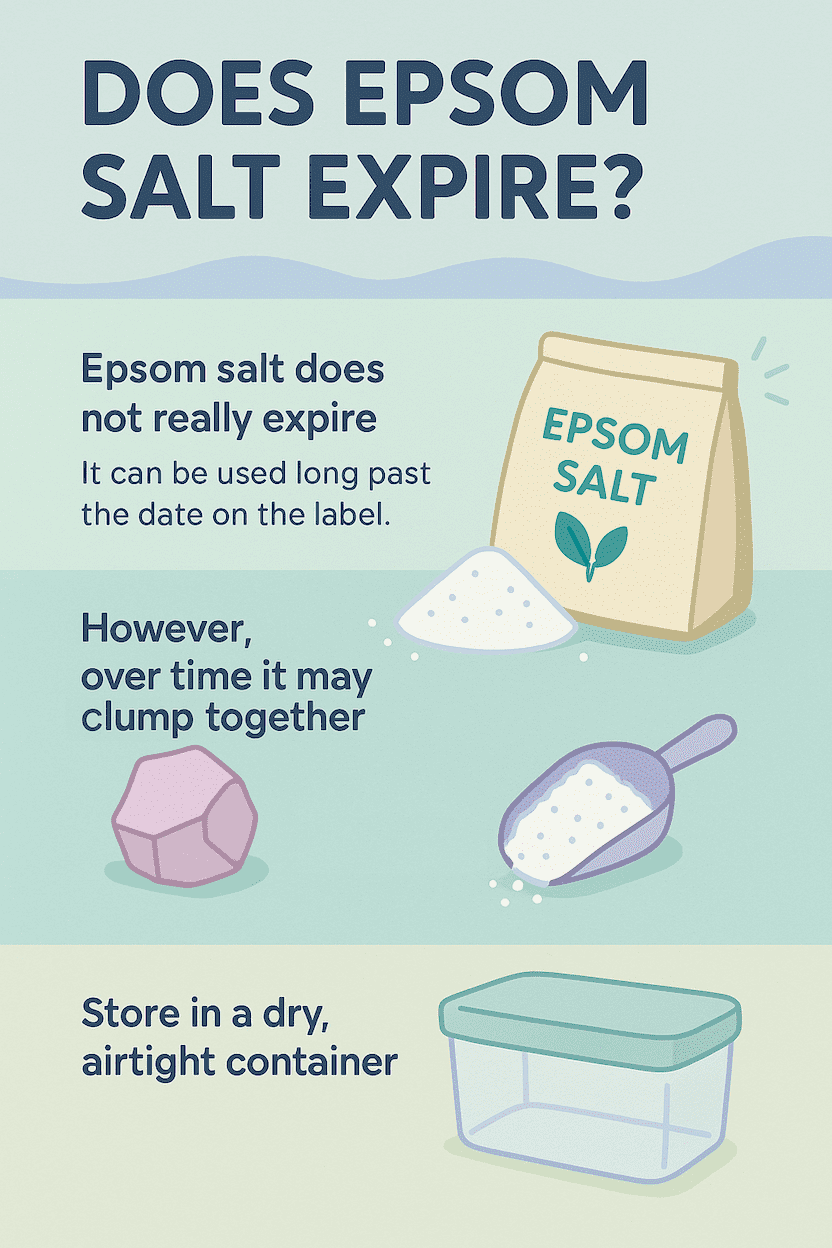
What can actually go wrong
Even though Epsom salt is stable, it's not bulletproof. The biggest enemy? Moisture.
Problem #1: It gets clumpy
Epsom salt pulls moisture from the air. If your bathroom is steamy or you leave the bag open, the salt soaks up water and turns into hard chunks. Sometimes these clumps are rock-solid.
Clumped salt isn't dangerous. You can still use it. But it's annoying, and too much moisture over time can cause worse issues.
Problem #2: Stuff can grow in it
When Epsom salt stays wet for a long time, bacteria or mold might start growing. This doesn't happen often because the salt itself doesn't feed microbes.
But if your salt got contaminated with anything organic (like bathroom dust or dead skin from scooping with wet hands), things can get nasty.
See fuzzy growth, dark spots, or smell something weird? Toss it. Your $8 bag of salt isn't worth a skin problem.
Problem #3: The package breaks down
Paper bags rip. Plastic cracks. Even good packaging can fail over time. When that happens, moisture, bugs, and dirt get inside. Nobody wants to bathe in ant-infested salt.
How to check if your Epsom salt is still good
What to Check | Good Sign | Bad Sign |
|---|---|---|
Texture | Dry, flows freely like sand | Hard clumps that won't break apart |
Color | White or clear crystals | Yellow, brown, or spotted |
Smell | No smell or faint mineral scent | Musty, moldy, or chemical odor |
Package | Sealed and dry | Ripped, wet, or damaged |
When you're not sure, throw it out. A fresh bag is cheap.
How to store Epsom salt properly
Want your Epsom salt to last years? Here's what to do:
- Keep it sealed tight. Close the bag completely after each use. Better yet, put it in an airtight container. Glass jars with rubber seals work great.
- Store somewhere cool and dry. Not under the bathroom sink where it gets humid. Try a linen closet or pantry instead.
- Always use a dry scoop. Never reach into the bag with wet hands. Even a tiny bit of moisture spreads through the whole batch.
- Write the date on it. You won't remember when you bought it later. A quick note with a marker helps.
- Buy smaller amounts. If you only take Epsom salt baths sometimes, get the small bag. You'll use it up before moisture becomes a problem.
VitaRx Tip
Keep all your bath products in one dry spot. Makes it easier to check on them and stay organized.
Different types of Epsom salt
You'll see three main types at the store:
- USP grade (pharmaceutical): Highest purity, best for baths
- Food grade: Safe to consume, medium purity
- Agricultural grade: For gardens, lowest purity
All types last the same amount of time. But USP grade usually comes in better packaging because it's meant for your body. Garden-grade salt often comes in flimsy bags that rip easily.
For baths, stick with USP grade. The packaging protects it better from moisture.
What about scented Epsom salts?
Many brands add essential oils, dried flowers, colors, or fragrances. These extras definitely don't last as long as plain magnesium sulfate.
Essential oils lose their scent over time. Dried flowers can get moldy if moisture sneaks in. Synthetic fragrances might start smelling weird.
If your scented salt doesn't smell right anymore, the base salt might be fine but the experience won't be great. These products usually have real expiration dates. Follow them.
Other ways to use questionable Epsom salt
Found a bag that looks iffy but don't want to waste it? Try:
- In your garden: Plants love magnesium sulfate, especially tomatoes and roses. Clumpy salt works fine in soil.
- As a cleaning scrub: Mix with dish soap to clean sinks and tubs. Just don't use contaminated salt.
- For foot soaks: If it looks okay but you're unsure about a full bath, try soaking just your feet first.
But honestly? If you're questioning it, just buy fresh. Peace of mind is worth a few bucks.
Fresh vs. old Epsom salt
Feature | Fresh Epsom Salt | Old/Improperly Stored |
|---|---|---|
Appearance | White, crystalline | May be yellowed or spotted |
Texture | Flows freely | Clumped or rock-hard |
Smell | Odorless | Could smell musty |
Effectiveness | 100% | Same if uncontaminated |
Safety | Totally safe | Risk of contamination |
Frequently asked questions (FAQ)
Here are some of the most frequently asked questions about Epsom salt.
Final thoughts
Next time you find that dusty bag of Epsom salt, you'll know exactly what to look for. The mineral itself doesn't spoil, but how you store it matters a lot. Keep it sealed and dry, and you can stock up without worry.
Knowing how your wellness products work over time helps you make smarter choices. Whether you're soaking away workout soreness or just want to relax, fresh Epsom salt in warm water is a simple way to take care of yourself. And if you're thinking about your overall magnesium intake, combining baths with the right daily supplements gives you more options.
VitaRx makes it easier to figure out what your body needs. Sometimes that's a relaxing bath. Sometimes it's adjusting your vitamins. Either way, you've got the info to decide.
Sources and references
Editor

Derick Rodriguez
Derick Rodriguez focuses on editing health and wellness-related content. With over half a decade of experience in the digital realm, Derick has developed a unique skill set that bridges the gap between complex health concepts and accessible, user-friendly communication. His approach is deeply rooted in leveraging personal experiences and insights to illuminate the nuances of health and wellness topics, making them more approachable and empowering readers with knowledge and confidence.
Editor

Yerain Abreu
Yerain Abreu is a content strategist with over seven years of experience. He earned a Master's degree in digital marketing from Zicklin School of Business. He focuses on medical and health-related content, working with top healthcare professionals to ensure content is engaging and reliable.
At VitaRx, we're not just passionate about our work — we take immense pride in it. Our dedicated team of writers diligently follows strict editorial standards, ensuring that every piece of content we publish is accurate, current, and highly valuable. We don't just strive for quality; we aim for excellence.
Related posts
While you're at it, here are some other relevant articles you might be interested in.

Get your personalized vitamin recommendations in less than
5 minutes.
Get your personalized vitamin recommendations in less than
5 minutes.




